Saxophone Quick Start

1. Reed and mouthpiece assembly
1. Montage von Blatt und Mundstück
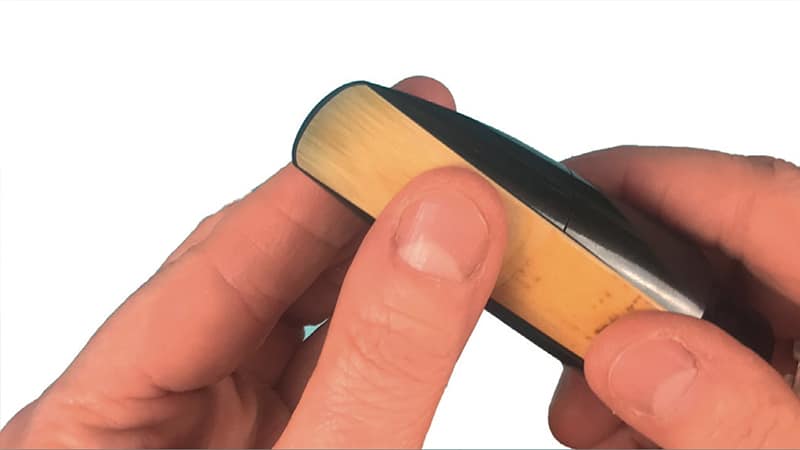
Lay the slightly moistened reed flat no the underside of the mouthpiece and match the shape of the reed at the top of the shape of the edge of the mouthpiece.
Lege das leicht angefeuchtete Blatt plan auf die Unterseite des Mundstückes und passe die Form des Blattes am oberen Rand der Kan- tenform des Mundstückes an.
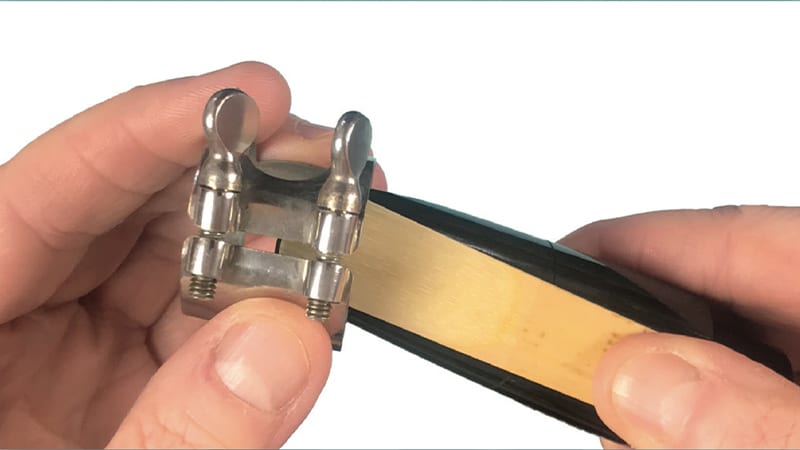
Clamp the rounded shaft of the reed with your right thumb and carefuly slide the ligature over the tip of the mouthpiece.
Klemme den abgerundeten Schaft des Blätt- chens mit dem rechten Daumen fest und schiebe die Blatt- schraube vorsichtig über die Spitze des Mundstückes.
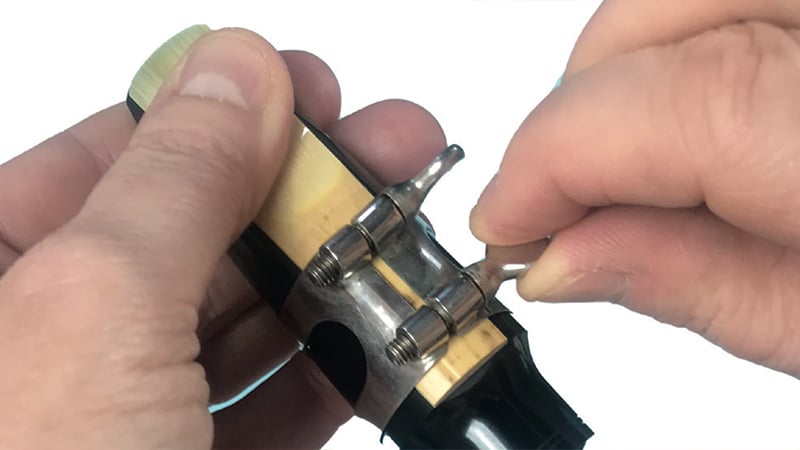
Press the reed against the mouthpiece with your thumb, pull the ligature down over the rounded reed shaft and tighten the screws.
Presse mit dem Daumen das Blatt gegen das Mundstück, ziehe die Blattschraube nach unten über den abgerundeten Blattschaft und drehe die Schrauben fest.
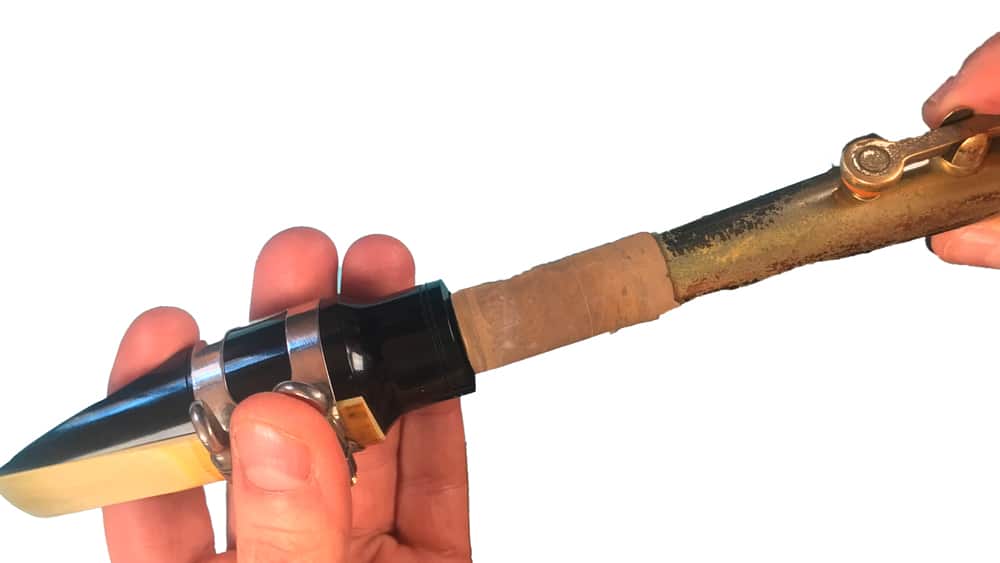
Slide the mouthpiece onto the cork of the saxbow with a slight twisting motion. The saxophone reed points down in the final position.
Schiebe das Mundstück mit leichter Dreh- bewegung auf den Korken des S-Bogens. Das Saxophonblatt zeigt in der Endposition nach unten.
2. Approach, breathing and tongue technique
2. Ansatz, Atmung und Zungentechnik
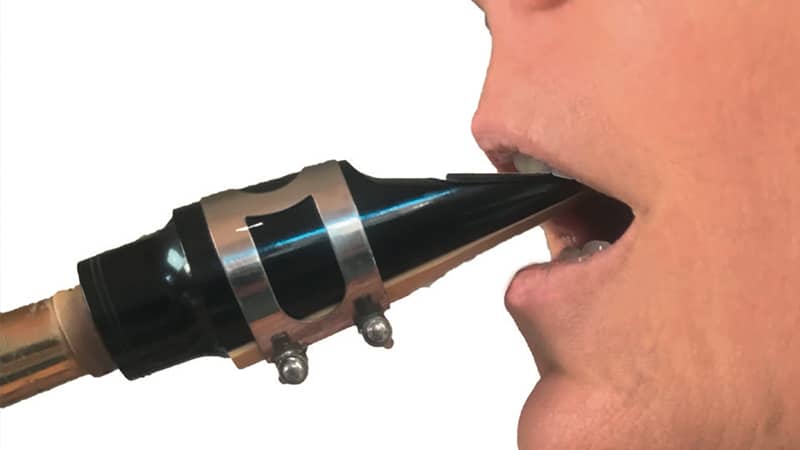
Set the incisors firmly 1cm from the tip of the mouthpiece. Say the syllable Wee and pull your upper and lower lips back slightly.
Setze die Schneidezähne 1 cm von der Mund- stückspitze entfernt fest auf. Spreche die Silbe Wee und ziehe die Ober- und Unterlippe etwas nach hinten.
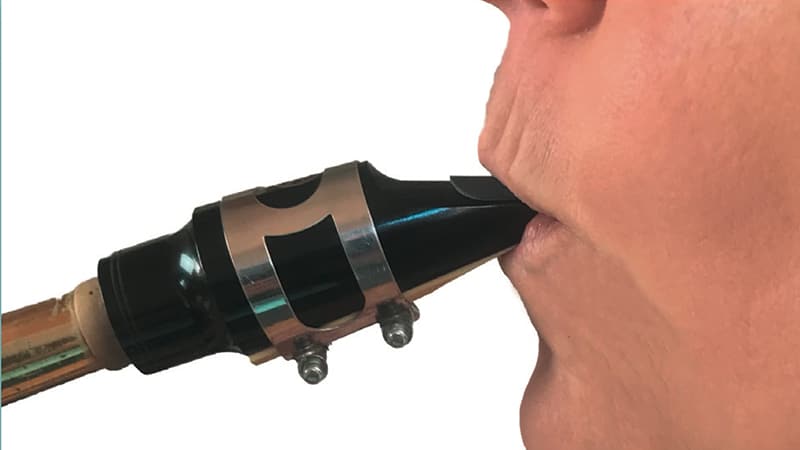
Maintaining Wee lip tension, lay the lower lip loosely against the sheet and close the mouth at the top and sides. The lower jaw remains loose.
Behalte die Wee-Lippenspannung bei, lege die Unterlippe locker am Blatt an und schlie- ße oben und seitlich den Mund. Der Unter- kiefer bleibt dabei locker.
The tongue strikes each note in the front part of the reed with a voiceless Düüü. The upper incisors always remain firmly anchored on the mouthpiece. To breathe, only open the corners of your mouth and your lower jaw from the side.
Die Zunge stößt jeden Ton im vorderen Teil des Blattes mit einem stimmlosen Düüü an. Die oberen Schneidezähne bleiben immer fest auf dem Mundstück verankert. Zur Atmung öffnest du nur seitlich die Mundwinkel und den Unterkiefer.
3. Plug and Play

Insert the neck into the body with a slight twisting movement. The bracket of the S-bocal should be centered over the small pin on the body.
Stecke den S-Bogen mit einer leichten Dreh- bewegung in den Korpus. Der Bügel des S- Bogens sollte mittig über dem kleinen Zapfen am Korpus sitzen.

Attach the sax strap to the locking ring on the back of the body. Adjust the strap length so that the incisors on the mouthpiece rest comfortably.
Befestige den Saxophongurt am Sicherungs- ring auf der Rückseite des Korpus. Justiere die Gurtlänge, dass die Schneidezähne am Mundstück bequem aufliegen.
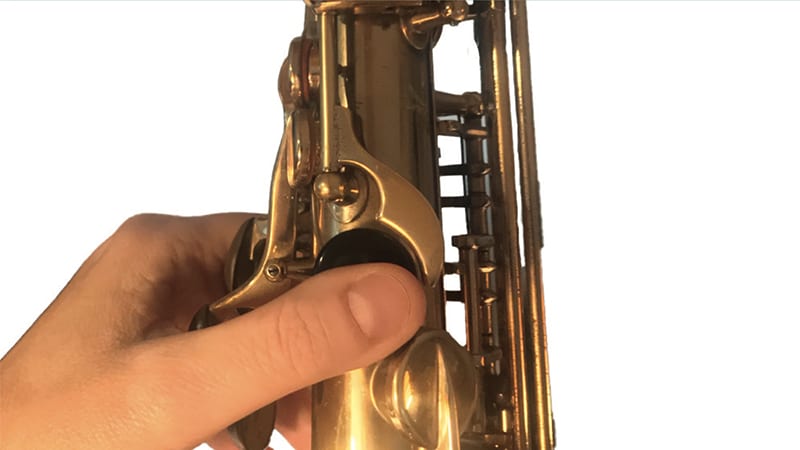
Now place your left thumb on the flattened filling button and always keep contact with this important point of support and orientation.
Lege jetzt den linken Daumen auf den ab- geflachten Ablageknopf und behalte immer Kontakt zu diesem wichtigen Stütz- und Orientierungspunkt.

On the back in the lower third is the thumb hook for the right thumb. The weight is not on the thumb, but hangs on the strap.
Auf der Rückseite im unteren Drittel befindet sich der Daumenhaken für den rechten Dau- men. Das Gewicht liegt nicht auf dem Dau- men, sondern hängt am Gurt.
4. The first grips with the left hand
4. Die ersten Griffe mit der linken Hand

English Version
German Version